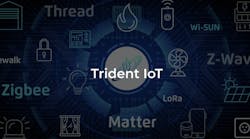As cities around the world grapple with plans to reopen amid a global COVID-19 pandemic, enterprises are tasked with the primary goal of reducing the exposure risk to employees as prudently as possible. Focusing on the well-being of employees ensures they understand that the firm has their best interests at heart.
Organizations also must ensure that their plans and their actions are aligned with their “duty to care” for employees. That includes establishing a communications process with employees wherein they identify the firm as a trusted source of information related to the pandemic because there is certainly enough conflicting information in the public domain.
Firms should offer guidance to employees to assist in their ability to manage the impact of the pandemic, especially as working from home might be the new normal for many people. Enterprises can also offer other useful information about coping techniques, the maintenance of daily routines, school and childcare concerns, and even a focus on personal health, including adequate exercise, a healthy diet, and getting enough sleep. During this pandemic, it’s important to remind employees that they are not alone and there are resources available by their firm to assist them.
Any plan for returning to work should incorporate the latest scientific evidence and recommendations, as well as adherence to local, state, and federal COVID-19 guidelines and paperwork. Ensure HIPAA requirements are accounted for in the planning and execution phases. The following recommendations, at a minimum, should be considered:
- Prevention Actions
○ Social distancing
○ Wearing masks
○ Personal protective equipment, where appropriate
○ Good hygiene practices
○ Stay at home should you feel ill
- Detection Actions
○ Routine testing of employees
○ Monitor for any symptomatic employees
○ Routine temperature screening
- Mitigation Actions
○ Employees identified as having symptoms, or possibly been exposed to COVID-19, shall be isolated and a contact tracing investigation initiated immediately.
○ Encourage timely reporting of any medical exposures involving employees and their family members.
○ Appropriate employees shall be quarantined for up to 14 days.
○ Employees shall be offered the option to work from home, if possible.
Firms should expect their employees to consider their own risk factors and that of their families on their individual return to work decisions, and firms should allow for that in their planning.
Mitigating Liability Risks
Employers should also consider the liability risks associated with their return-to-work plan. Many organizations might want to incorporate some of the following actions:
- Firms will need to document their Return to Work Plan, identifying steps undertaken to protect employees, aligning with best science recommendations at the time. Anticipate possible changes to the plan as additional information is developed about COVID-19.
- Consider having employees sign liability waivers.
- Enact appropriate COVID-19 cleaning protocols for the firm.
- Ensure the firm has a plan to move to a work-from-home status dependent upon reaching certain pre-established data points, such as the penetration rate of COVID-19 within the firm, etc.
- Develop a communications strategy with firm employees, ensuring they are kept up to date on latest developments as well as the ability to share any concerns they may have. Become the trusted voice.
- Prepare security game plans related to returning to work, taking into account the use of technology in lieu of security personnel, where appropriate.
- Reorganize office space to accommodate social distancing requirements.
- Ensure HVAC systems are reviewed and meet environmental standards related to COVID-19.
- Ensure global security and human resources teams have processes in place to monitor the effects of increased stress due to COVID-19 on their employees.
- Ensure employees are aware of the benefits of the firm’s Employee Assistance Program (EAP).
- Business travel may be curtailed or left to the discretion of the employee.
- Coordinate the return-to-work plan with the firm’s human resources and legal teams.
Additional Considerations
- Survey employees, or a representative sample, for their thoughts on the return-to-work strategy.
- Firms should determine the need for an off-work monitoring (self-reporting, for example) process identifying high-risk activities on the part of some employees, for the ongoing protection of other firm employees, and the resultant plan to mitigate risk.
- Consider the use of telecommunication capabilities such as Zoom, Microsoft Teams, etc., for meetings, when back to work, in lieu of in-person meetings.
- Determine the requirements for employee lunches.
About the Author:
Brian W. Lynch, is Executive Director of Safety & Security at RANE, a network-based risk intelligence company. He brings nearly four decades of senior management and executive level experience in the fields of law enforcement, safety, and security. Previously, Lynch served as Head of Global Security at Vanguard, where he designed and executed the firm's enterprise-wide Eight Phase Global Security Program as well as a 24x7 global operational model responsible for the identification, analysis, response, and resolution of security incidents. During his tenure in the FBI, Lynch led the Bureau’s efforts in national security investigations by overseeing counterintelligence investigations and intelligence efforts by foreign intelligence services, through tracking and seizing terrorist funds, as well as leading terrorism investigations through the FBI’s Joint Terrorism Task Forces, resulting in the disruption of terror attacks, and led law enforcement and intelligence efforts at the FBI’s Terrorist Screening Center as Deputy Director of Operations, as well as successfully conducted criminal investigations into white collar crime, civil rights, violent crime, and drug/gang matters.


